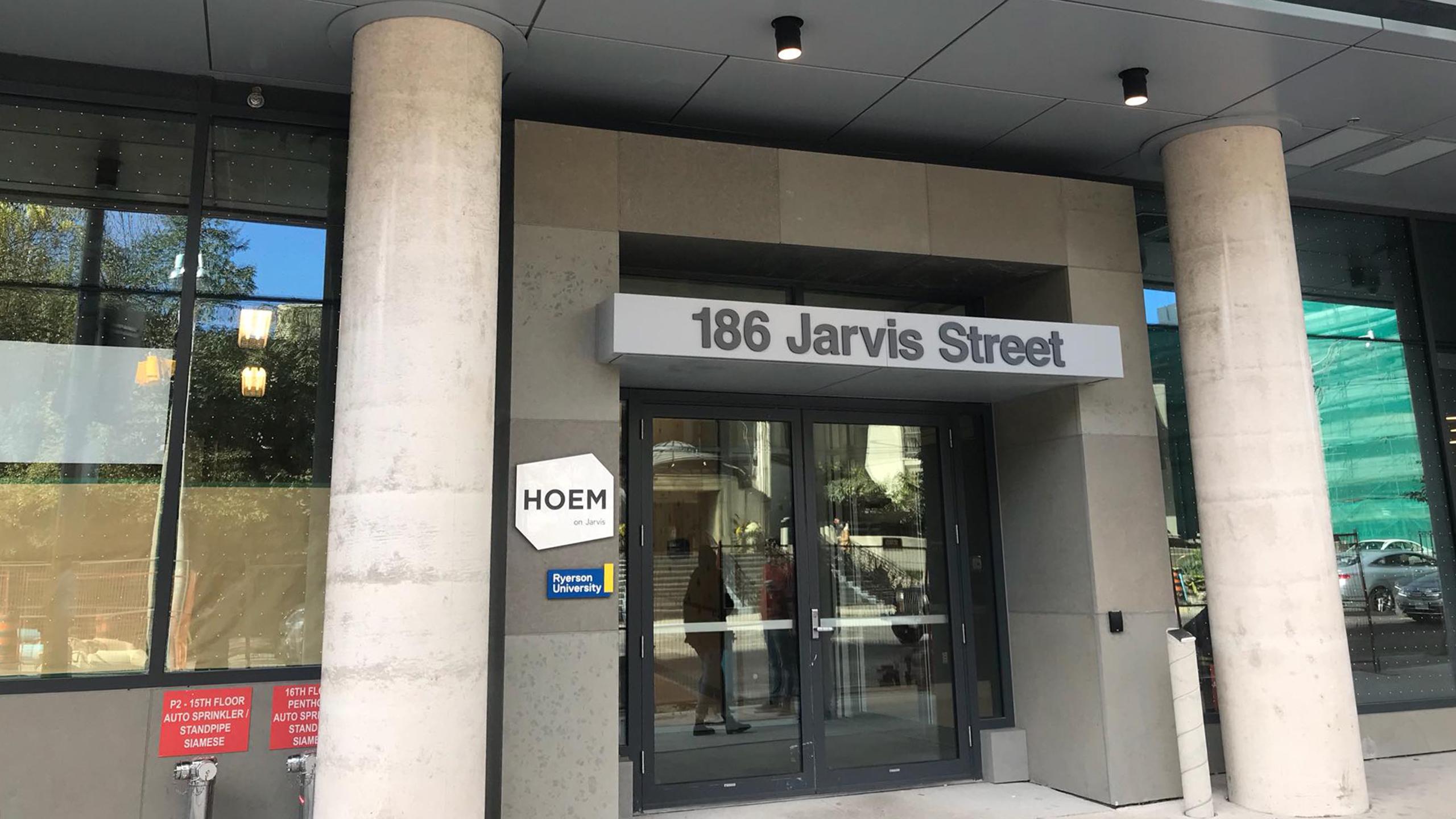By Rhea Singh
Students living in the HOEM residence building on Jarvis Street are concerned about the building’s security due to their faceless residence access cards.
Since Ryerson University students moved into HOEM in late August, they’ve found the building’s security system differs from that of on-campus residences Pitman Hall and the International Living and Learning Centre (ILLC).
Unlike Pitman Hall and ILLC, HOEM is a partnership between Ryerson and Canadian Student Communities Inc.
Both Pitman and ILLC require students who live in the building to scan a residence ID with a photo of their face, name and Ryerson OneCard number on it to enter the living area of the building. Students also have separate keys that unlock their rooms.
HOEM, however, provides students with grey faceless access cards that take them through a step-by-step security process. Students initially use that one grey card to unlock two doors in the building, flash their card to desk staff, proceed to use the card to access their floor on the elevator and finally to access their rooms.
“Housing and residence life takes this very seriously, including staffing all residences with services desks offering peer and security support 24-7,” said Valerie Bruce, assistant director, housing operations and administration for housing and residence life at Ryerson.
Security guards oversee the welcome desks at all three residences during off-hours. But some students in HOEM are still concerned that their faceless access cards could lead to security issues within the building.
First-year electrical engineering student Maggie Malkin said the misuse of the access cards began as soon as students moved in.
“The first day people were borrowing each other’s keys,” she said. “And if a whole crowd comes in, all you have to do is flash your card.”
Malkin said there is a procedure to sign guests in. HOEM’s procedure to sign guests in is limited to three people each, much like Pitman and ILLC.
Malkin said residents are required to show their OneCard and guests must provide identification, but no wristband is provided to guests as is done at Pitman and ILLC.
“Over the first couple of days at parties, residents would give their friends their cards and people would pretend they live there,” she said.
The Eye contacted five staff members within the building who declined to comment, citing the university’s policy on media requests.
“In any instance of concern, security or emergency, residence advisors (RAs) on-call will respond and assess the situation contacting necessary support (i.e. live-in RU professional residence life facilitator, on-call Ryerson security, 911, etc.) as needed,” Bruce said.
For Kate Yien, a resident of HOEM and first-year journalism student, the physical building itself feels safe—especially since she was told the rooms are shooter secure.
But she said she can see how the faceless cards are an issue, and how the easy access to these cards can lead to the lack of safety in the building for students.
“If someone gets a hold of your card there is no defence, if you just flash the card the front [desk] is probably not going to recognize this person and because of that, if you lose your card you compromise the security of the entire building,” said Yien.
Heidi Lee, a first-year journalism student and resident of HOEM, shared similar concerns to Malkin and Yien, and has seen people sneak in to the building without a card.
“Sometimes when the door opens when I go in, people that are friends of residents of the building sneak in,” said Lee.
What’s most concerning for Lee is that desk staff don’t take notice of this when it happens.
HOEM staff should receive more training about student safety, she said, adding the RAs are more concerned about technical issues like fire safety and WiFi issues. “But how do we spot strangers?”











Leave a Reply